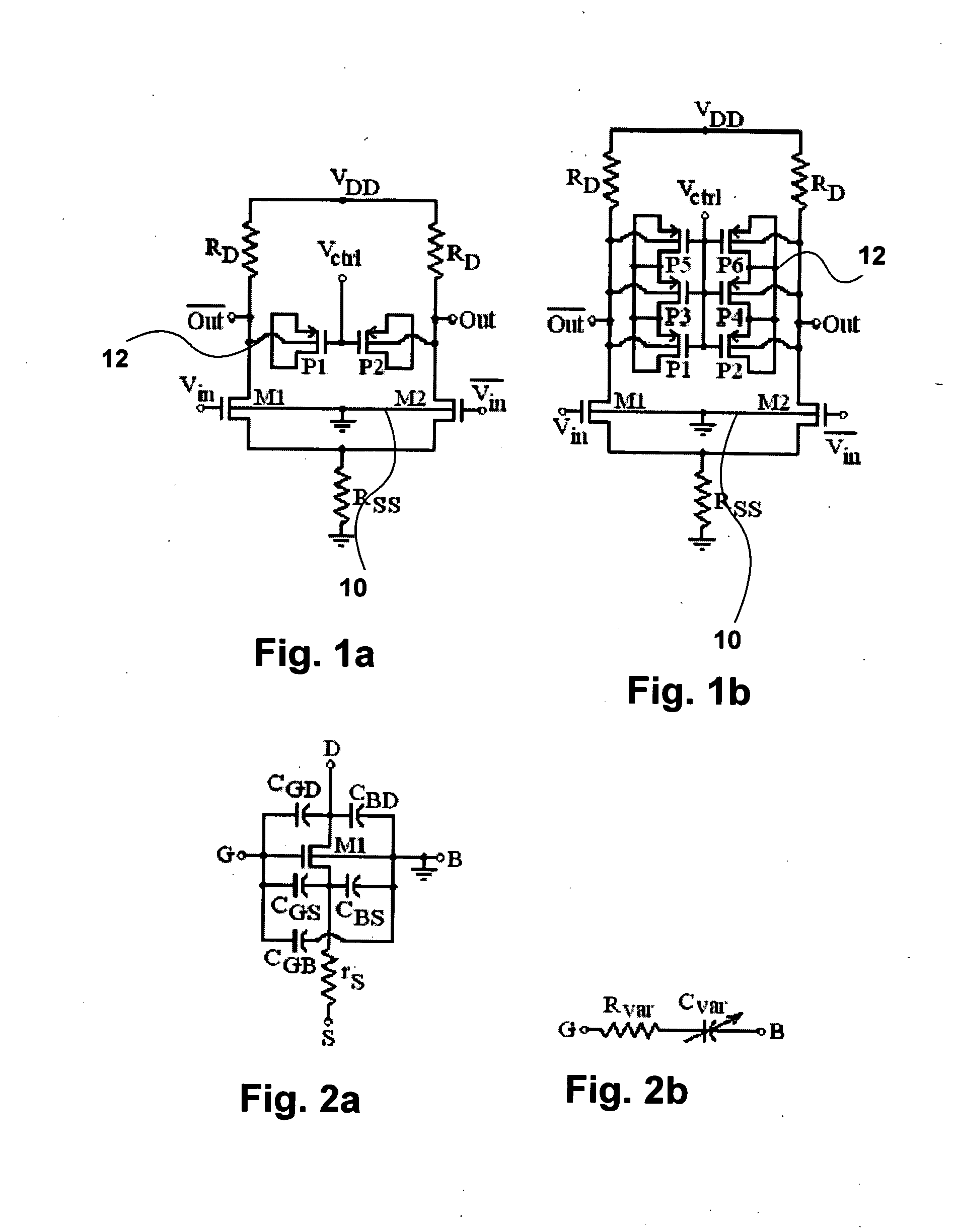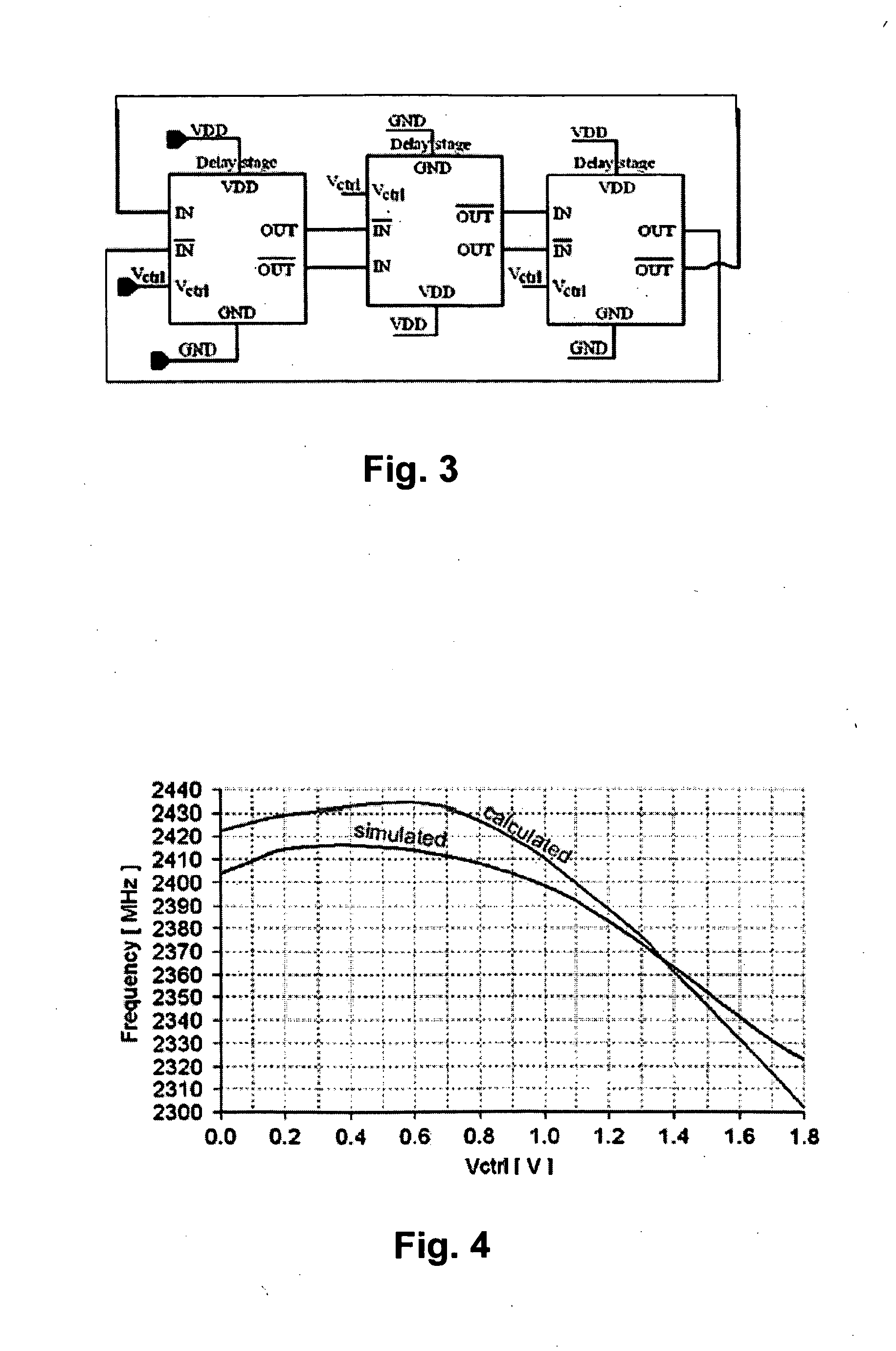Delay cell for ring oscillator
a delay cell and ring oscillator technology, applied in pulse generators, pulse manipulation, pulse techniques, etc., can solve the problems of unsuitable small-scale cmos integration, and achieve the effects of low power dissipation, small die area, and simple design
- Summary
- Abstract
- Description
- Claims
- Application Information
AI Technical Summary
Benefits of technology
Problems solved by technology
Method used
Image
Examples
Embodiment Construction
[0019] The novel delay cell in accordance with the principles of the invention employs a resistive element, such as a resistor, as a common source for a differential amplifier. By using a resistive element instead of a common current source, the performance of the oscillator can be considerably improved.
[0020] The delay cell shown in FIG. 1a comprises a differential amplifier 10 consisting of a pair of n-channel MOSFETs M1 and M2 having their substrates connected to ground. The gates of the MOSFETs M1 and M2 are connected to voltage inputs Vin and Vout.
[0021] The sources of the MOSFETs M1 and M2 are connected to ground through a common source resistor RSS. The drains are connected through respective load resistors RD to VDD. FIG. 2a shows an equivalent circuit for the MOSFETs.
[0022] A varactor arrangement of fingers 12 is connected between the drains of the MOSFETs M1 and M2. The varactor arrangement consists of a pair of p-channel MOSFETs P1 and P2 connected at their gates. The ...
PUM
 Login to View More
Login to View More Abstract
Description
Claims
Application Information
 Login to View More
Login to View More - R&D
- Intellectual Property
- Life Sciences
- Materials
- Tech Scout
- Unparalleled Data Quality
- Higher Quality Content
- 60% Fewer Hallucinations
Browse by: Latest US Patents, China's latest patents, Technical Efficacy Thesaurus, Application Domain, Technology Topic, Popular Technical Reports.
© 2025 PatSnap. All rights reserved.Legal|Privacy policy|Modern Slavery Act Transparency Statement|Sitemap|About US| Contact US: help@patsnap.com



